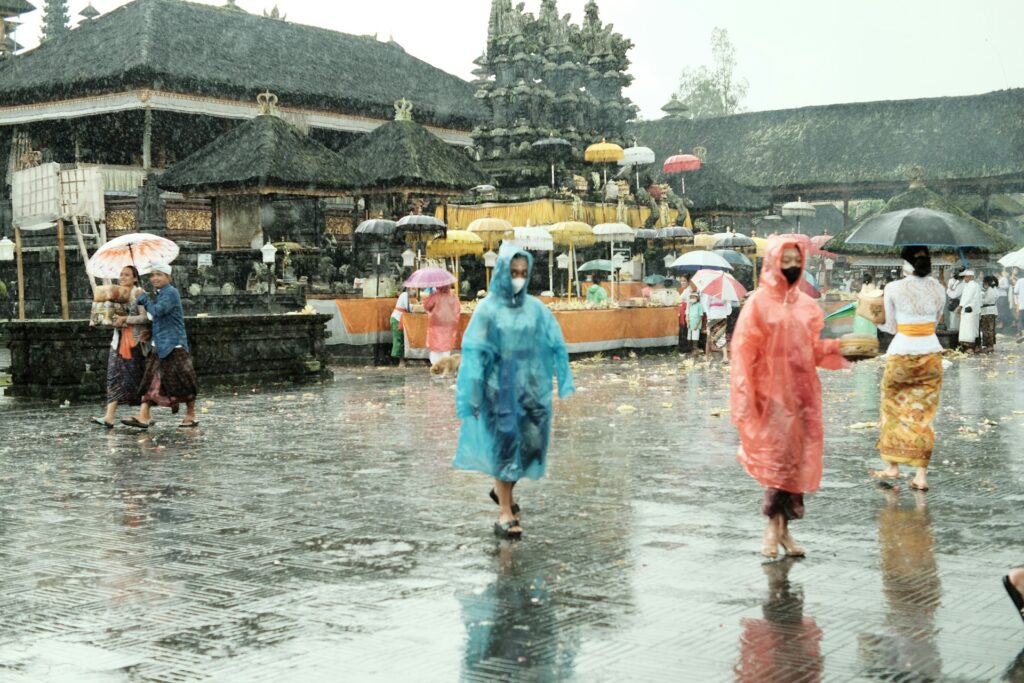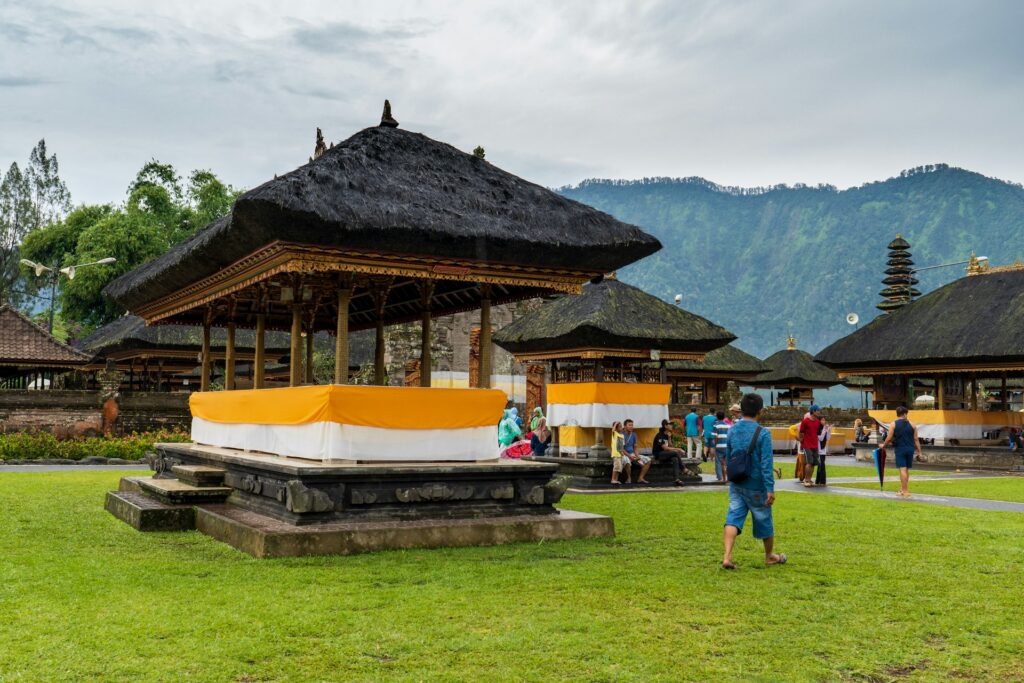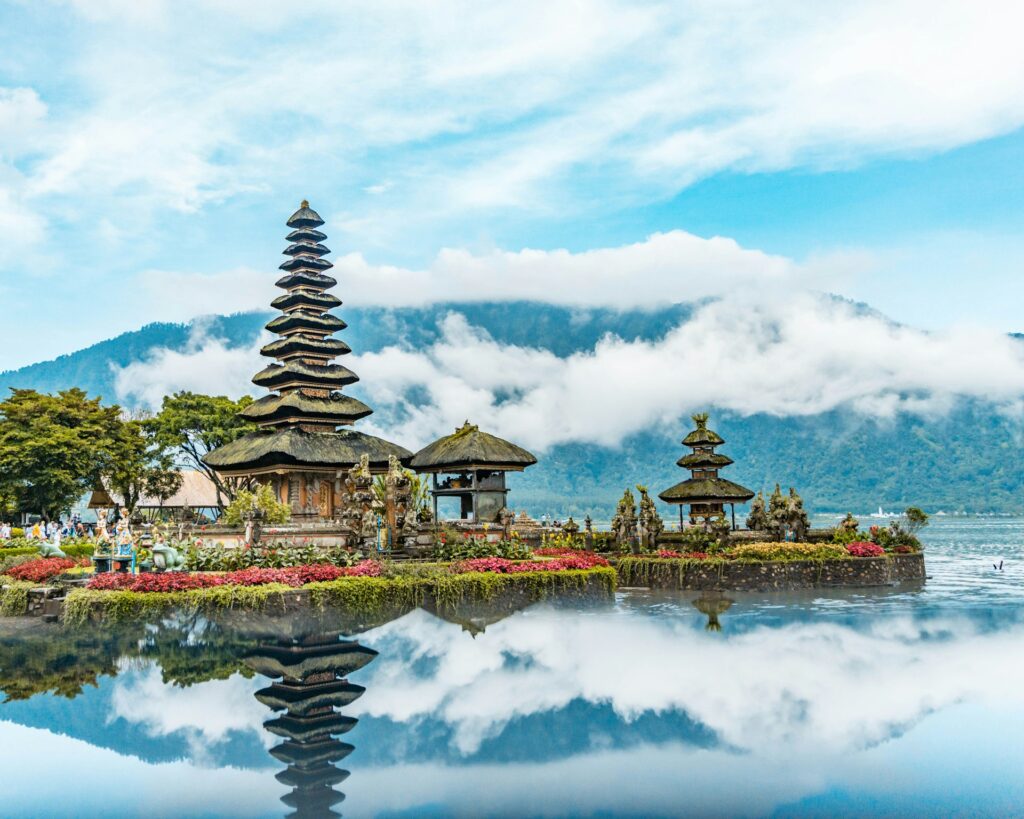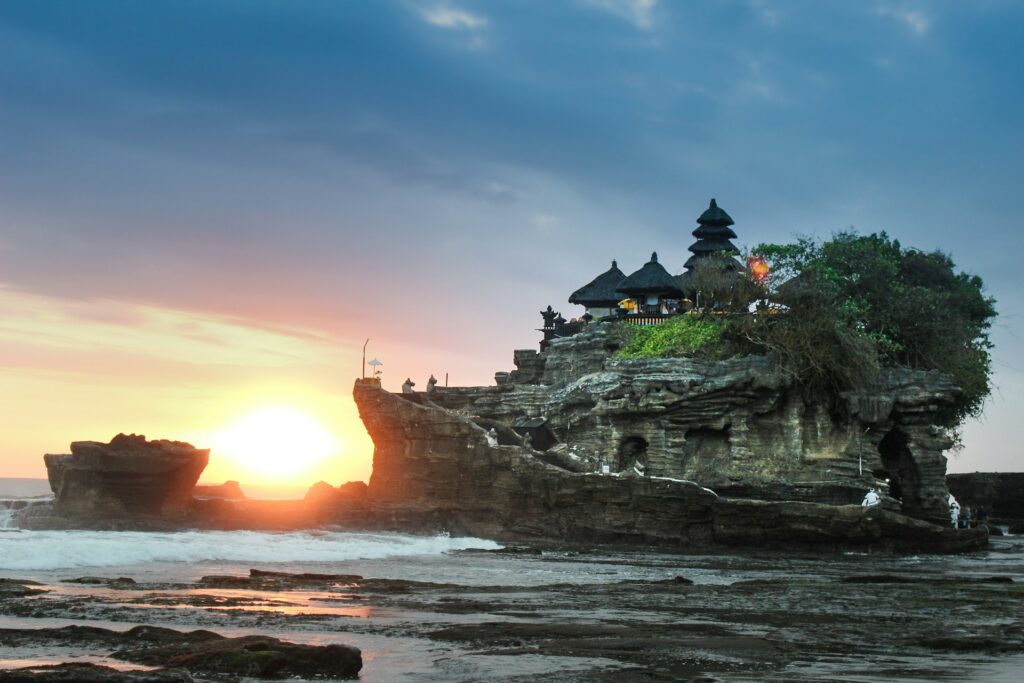Worst Time to Travel to Bali: Bali Traveling Tips
Bali, the famed Indonesian island, is a dream destination for many travelers. Its lush landscapes, vibrant culture, and stunning beaches make it a year-round hotspot.
However, knowing when to avoid traveling can save you from potential hassles and ensure a more enjoyable experience. Let’s dive into understanding the worst time to travel to Bali and how to navigate them.
Understanding Bali’s Climate
Bali boasts a tropical climate characterized by two main seasons: the wet season and the dry season. The wet season, from November to March, brings heavy rainfall and humidity, while the dry season, from April to October, offers sunny and warm weather.
Wet Season in Bali
Duration of the Wet Season
The wet season in Bali typically spans from November to March. During these months, the island experiences significant rainfall, often in short, intense bursts. Bali in January is particularly rainy, making it the wettest month of the year.
Weather Conditions During the Wet Season
During the wet season, Bali experiences increased humidity and frequent tropical downpours. These showers are often intense but short-lived, usually occurring in the afternoon or evening. The temperatures remain warm, averaging between 26°C (79°F) and 30°C (86°F), ensuring that it’s still pleasant for outdoor activities.

Impact on Travel Plans
Traveling during the wet season means fewer opportunities for beach days and outdoor adventures. Muddy hiking trails, choppy seas, and cloudy skies can dampen the vacation spirit.
Exploring Bali During the Wet Season
Bali, the “Island of the Gods,” offers year-round tropical beauty. However, visiting during the wet season, which runs from November to March, provides a unique experience. While some travelers may shy away from this period due to the rain, there are numerous advantages to exploring Bali during the wet season. Here’s what you need to know to make the most of your trip.
Advantages of Traveling in the Wet Season
- Lower Prices: One of the biggest advantages of visiting Bali during the wet season is the significant reduction in travel costs. Flights, accommodations, and tours are often cheaper, making it an ideal time for budget-conscious travelers.
- Fewer Crowds: Popular tourist spots like Ubud, Seminyak, and Kuta are less crowded, allowing you to explore the island’s attractions with more ease and tranquility.
- Lush Landscapes: The rain transforms Bali’s landscapes into vibrant green vistas. Rice terraces, forests, and waterfalls are at their most beautiful and photogenic during this time.
- Unique Experiences: The wet season provides opportunities for unique experiences, such as rafting on the Ayung River, which becomes more exhilarating with the increased water flow.
Activities to Enjoy
- Cultural Experiences: Visit temples, museums, and art galleries to delve into Bali’s rich culture and history. Ubud is particularly famous for its cultural attractions and traditional dance performances.
- Spa and Wellness: Take advantage of Bali’s world-renowned spa treatments and wellness retreats. The wet season is perfect for indulging in massages, yoga sessions, and holistic therapies.
- Indoor Activities: Explore Bali’s vibrant cafe culture, visit local markets, or take a cooking class to learn how to prepare traditional Balinese dishes.
- Water Adventures: Rain doesn’t stop water activities like surfing, diving, and snorkeling. The seas remain warm, and dive sites like Nusa Penida and Amed offer excellent underwater experiences year-round.
Practical Tips for Wet Season Travel
- Pack Smart: Include lightweight rain gear, quick-drying clothes, and waterproof bags for your electronics. A good pair of waterproof sandals or shoes is also essential.
- Stay Informed: Monitor local weather forecasts to plan your activities around the rain. Most rain showers are brief, so you can often wait them out.
- Flexible Itinerary: Keep your plans flexible to accommodate sudden weather changes. Have backup activities like visiting indoor attractions or enjoying a spa day.
- Health Precautions: Use insect repellent to protect against mosquitoes, which are more prevalent during the wet season. Also, ensure you have travel insurance that covers any weather-related disruptions.
High Tourist Season in Bali

When is the High Tourist Season?
The high tourist season in Bali coincides with the summer holidays in the Northern Hemisphere, primarily from June to August, and the Christmas and New Year period in December.
Crowds and Availability of Accommodations
During these peak times, expect large crowds at popular tourist spots, fully booked hotels, and long lines at attractions.
Price Surges and Budget Considerations
Prices for flights, accommodations, and activities can skyrocket during the high season. If you’re on a tight budget, these months might not be ideal for your visit.
Holiday Seasons and Festivals

Major Holidays and Festivals
Bali is home to numerous cultural festivals and holidays, such as Galungan, Kuningan, and Nyepi. While these are fascinating to witness, they can also lead to increased tourist numbers and limited availability of services.
How They Affect Travel
During major festivals, certain areas may be closed off, and transportation can become challenging due to local celebrations.
Nyepi Day: A Unique Balinese Holiday
What is Nyepi Day?
Nyepi, the Day of Silence, is a Hindu holiday observed in Bali. It involves 24 hours of silence, fasting, and meditation.
Travel Restrictions During Nyepi
On Nyepi Day, the entire island shuts down. No flights, no transportation, no shops open, and everyone, including tourists, must stay indoors.
Avoiding the Australian School Holidays
Timing of Australian School Holidays
Australian school holidays, usually in April, July, and September, see a significant influx of Australian tourists.
Influence on Bali’s Tourist Influx
Bali has become a popular getaway for Australian families during their school breaks, leading to crowded beaches and attractions.
Impact of Weather on Outdoor Activities

Surfing Conditions
While Bali is famous for its surf spots, the wet season can bring rough seas and unpredictable waves, not ideal for surfing.
Hiking and Trekking During Different Seasons
Hiking trails can become slippery and hazardous during the wet season, making treks less enjoyable and more dangerous.
Beach Activities and Snorkeling
Rain and rough seas can limit beach activities and snorkeling opportunities, making it hard to enjoy Bali’s underwater beauty.
Transportation Issues During the Wet Season
Road Conditions
Heavy rains can lead to flooding and poor road conditions, making travel by car or scooter difficult and dangerous.
Flight Delays and Cancellations
The wet season also sees an increase in flight delays and cancellations due to bad weather, which can disrupt travel plans.
Health Concerns
Risk of Dengue Fever
The wet season in Bali brings a higher risk of mosquito-borne diseases like dengue fever. Precautions such as using mosquito repellent and staying in accommodations with proper screens are essential.
General Health Precautions During the Wet Season
Ensure you stay hydrated, avoid street food that might not be hygienic, and be cautious of waterborne illnesses during this time.
Pros and Cons of Traveling in the Off-Season

Benefits of Off-Season Travel
Traveling in the off-season often referred to as the shoulder season, means fewer crowds, lower prices, and a more relaxed atmosphere. You can enjoy more of Bali’s natural beauty without the tourist rush.
Drawbacks to Consider
However, the weather can be unpredictable, and some activities may not be available. It’s essential to weigh these factors when planning your trip.
Planning Your Trip Around Events and Weather
How to Research the Best Travel Time
Look up weather patterns, tourist influx data, and local events to determine the best time to visit Bali. Websites, travel guides, and local insights can be invaluable.
Tools and Resources for Planning
Utilize travel apps, forums, and local tourism websites to get real-time information and plan accordingly.
Local Insights on the Worst Time to Travel to Bali
What Locals Say About the Worst Travel Times
Locals often advise against visiting during the peak of the wet season and major holidays due to the inconveniences they bring.
Alternative Activities During Less Ideal Periods
If you must travel during less ideal times, explore indoor activities like visiting museums, art galleries, and cultural workshops. Consider taking cooking classes to learn about Balinese cuisine.
Personal Experiences and Stories

Traveler Anecdotes About Visiting During the Worst Times
Many travelers have stories about visiting Bali during the wet season or peak times. These experiences often highlight the challenges faced and the lessons learned.
Lessons Learned from Those Experiences
From packing appropriately to having backup plans, these stories emphasize the importance of preparation and flexibility.
Sustainable and Ethical Travel Considerations
Impact of Tourism on Bali’s Environment
High tourist seasons can strain Bali’s natural resources and infrastructure. Overcrowding can lead to environmental degradation, and increased waste can pollute the beautiful beaches and marine life.
Responsible Travel Tips
To minimize your impact, consider eco-friendly accommodations, support local businesses, and participate in beach cleanups. Respect local customs and traditions, and always dispose of waste properly.
What To Pack For Bali
Packing Essentials for Your Bali Adventure
Bali, with its stunning beaches, vibrant culture, and lush landscapes, is a tropical paradise. To make the most of your trip, it’s essential to pack wisely. Here’s a comprehensive guide on what to pack for Bali, ensuring you’re prepared for all the island has to offer.

1. Light and Breathable Clothing
Bali’s tropical climate means warm and humid weather year-round. Pack lightweight, breathable clothing made from natural fabrics like cotton and linen. Include shorts, t-shirts, sundresses, and swimwear. Don’t forget a light jacket or sweater for cooler evenings and air-conditioned places.
2. Comfortable Footwear
Exploring Bali requires comfortable footwear. Pack a pair of sturdy sandals for beach days and casual outings, and comfortable walking shoes for sightseeing and hiking. Flip-flops are also handy for the beach and poolside.
3. Sun Protection
The Balinese sun can be intense, so packing sun protection is crucial. Include a wide-brimmed hat, sunglasses with UV protection, and a high-SPF sunscreen. Lip balm with SPF is also essential to protect your lips from sunburn.
4. Swimwear and Beach Accessories
With Bali’s beautiful beaches and pools, swimwear is a must. Pack at least two sets of swimwear so you always have a dry one ready. Don’t forget a sarong or beach cover-up, which can also double as a towel or picnic blanket. A waterproof bag is useful for keeping your belongings dry at the beach.
5. Lightweight Rain Gear
Bali experiences sudden tropical showers, especially during the wet season (November to March). Pack a lightweight, compact rain jacket or poncho. Quick-dry clothing and a travel umbrella can also be lifesavers during unexpected downpours.
6. Travel Health Kit
A basic travel health kit is essential. Include any personal medications, along with over-the-counter remedies for common issues like headaches, stomach upset, and allergies. Don’t forget insect repellent to protect against mosquito bites, especially in the evenings.
7. Reusable Water Bottle
Staying hydrated is key in Bali’s warm climate. Bring a reusable water bottle to reduce plastic waste and keep you refreshed throughout the day. Many accommodations and cafes offer refill stations for convenience.
8. Electronics and Accessories
Pack your essential electronics, including your smartphone, camera, and any chargers or adapters you might need. A portable power bank is useful for keeping your devices charged on the go. If you plan on working or staying connected, a lightweight laptop or tablet can be handy.
9. Travel Documents and Money
Ensure you have all necessary travel documents, including your passport, visa (if required), travel insurance, and flight details. Bring some cash in the local currency (Indonesian Rupiah) and a credit or debit card. A money belt or secure wallet can help keep your valuables safe.
10. Eco-Friendly Toiletries
Consider eco-friendly toiletries to minimize your environmental impact. Solid shampoo and conditioner bars, biodegradable soap, and a bamboo toothbrush are great options. Don’t forget sunscreen that’s safe for coral reefs to protect Bali’s marine life.
Packing for Bali doesn’t have to be overwhelming. By including these essential items, you’ll be well-prepared for a comfortable and enjoyable trip. Remember to pack light, focusing on versatile and functional items that suit Bali’s tropical climate and vibrant culture.
Budget-Friendly Travel Tips for Bali
Bali, known as the “Island of the Gods,” is a dream destination for many. With its stunning beaches, vibrant culture, and lush landscapes, it offers a paradise-like experience. But did you know you can enjoy Bali on a budget? Here are some tips to help you explore Bali without emptying your wallet.

1. Travel During the Off-Season
Timing your visit to Bali can significantly affect your budget. The high season, which includes July, August, and the Christmas/New Year period, sees an influx of tourists and higher prices. Instead, consider visiting during the shoulder seasons (April to June and September to November). You’ll find cheaper accommodations and fewer crowds, allowing for a more relaxed experience.
2. Choose Budget Accommodation
Bali offers a wide range of accommodations, from luxury resorts to budget-friendly hostels and guesthouses. Areas like Kuta, Legian, and Ubud have numerous affordable options. Websites like Airbnb and Booking.com often have deals and discounts. For a unique experience, try staying in a homestay where you can immerse yourself in local culture.
3. Eat Like a Local
Dining out in Bali can be expensive if you stick to touristy restaurants. To save money, eat like a local. Warungs (small family-owned restaurants) offer delicious and authentic Indonesian food at a fraction of the price. Don’t miss out on trying dishes like Nasi Goreng (fried rice) and Mie Goreng (fried noodles). Street food is also a great way to taste the local cuisine without spending much.
4. Use Public Transport or Rent a Scooter
Transportation costs can add up quickly if you’re not careful. Taxis and private drivers are convenient but expensive. Instead, use public transportation options like bemos (minibusses) or rent a scooter for about $5 per day. Scooters are an economical and flexible way to explore the island, but make sure to wear a helmet and drive safely.
5. Explore Free and Low-Cost Attractions
Bali is rich in natural beauty and cultural sites that are either free or low-cost. Beaches like Kuta, Seminyak, and Nusa Dua offer sun and surf without an entrance fee. Temples such as Tanah Lot and Uluwatu have minimal entry fees and provide stunning views. Don’t forget to visit local markets and art galleries, where browsing is free and enjoyable.
6. Bargain and Shop Smart
Bali is a shopper’s paradise, but prices are often inflated for tourists. Bargaining is a common practice in markets and small shops. Start by offering half of the initial price and negotiate from there. Always be polite and remember that a friendly attitude goes a long way. For fixed prices, visit local supermarkets and department stores.
7. Take Advantage of Free Activities
Many activities in Bali are free or low-cost. Join a free yoga class, hike to hidden waterfalls, or watch a traditional dance performance at a temple. Explore rice terraces in Ubud, enjoy a sunrise hike up Mount Batur, or simply relax on the beach. Nature and culture are the highlights of Bali, and many experiences don’t cost a thing.
8. Plan and Book in Advance
Planning and booking your trip in advance can help you find the best deals. Look for flight deals, book accommodations early, and research discount passes for attractions. Websites and apps like Skyscanner, Kayak, and Traveloka often have promotions that can save you money.
Traveling to Bali on a budget is entirely possible with a bit of planning and savvy choices. By following these tips, you can enjoy all that this tropical paradise has to offer without straining your finances. Embrace the local culture, savor the affordable cuisine, and soak in the natural beauty of Bali—all while keeping your expenses in check.
Conclusion
Timing is everything when planning a Bali trip. While the island is a paradise, certain times of the year can present challenges like heavy rainfall, high prices, and overcrowding. By understanding Bali’s climate, peak seasons, and local events, you can plan a visit that maximizes enjoyment and minimizes stress. Whether you choose to brave the wettest month or navigate the bustling peak season, being prepared can make all the difference. Happy travels!
Frequently Asked Questions
For more information on traveling and destination recommendations, check out my other articles on WanderingNotLost.org
Wanderingnotlost.org is a participant in the Amazon Services LLC Associates Program, an affiliate advertising program designed to provide a means for website owners to earn advertising fees by advertising and linking to amazon(.com, .co.uk, .ca etc) and any other website that may be affiliated with Amazon Service LLC Associates Program.As an Amazon Associate, I earn from qualifying purchases







